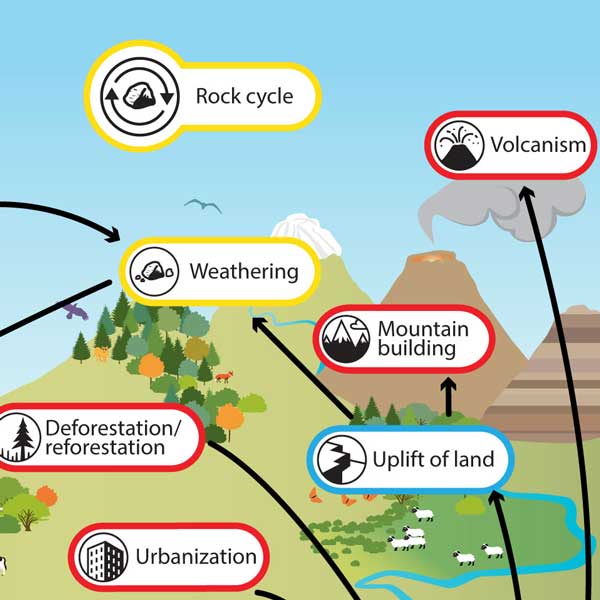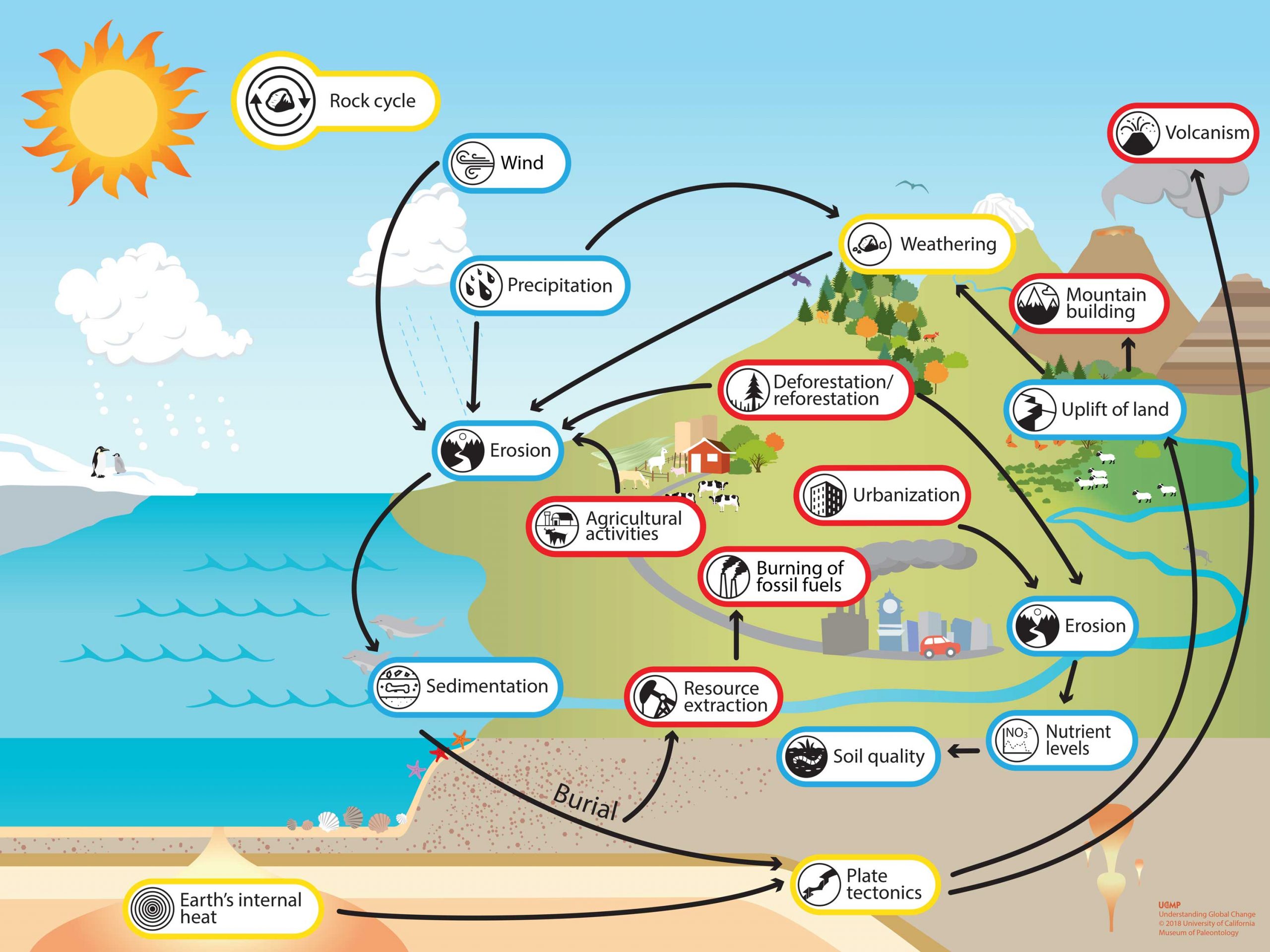The rock cycle describes the processes through which the three main rock types (igneous, metamorphic, and sedimentary) transform from one type into another. The formation, movement and transformation of rocks results from Earth’s internal heat, pressure from tectonic processes, and the effects of water, wind, gravity, and biological (including human) activities. The texture, structure, and composition of a rock indicate the conditions under which it formed and tell us about the history of the Earth.
On this page:
- What is the rock cycle?
- Earth system model of the rock cycle
- Explore the Earth System
- Links to Learn More
For the classroom:
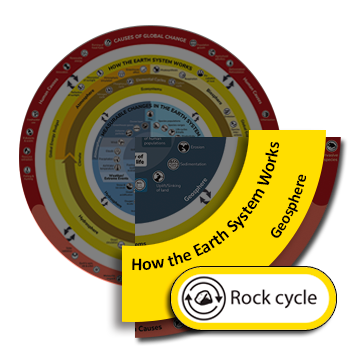
Global Change Infographic
The rock cycle is an essential part of How the Earth System Works. Click the image on the left to open the Understanding Global Change Infographic. Locate the rock cycle icon and identify other Earth system processes and phenomena that cause changes to, or are affected by, the rock cycle.
What is the rock cycle?
Rocks can be: (1) made of minerals, each of which has a specific crystal structure and chemical composition; (2) made of pieces of other rocks; (3) glassy (like obsidian); or, (4) contain material made by living organisms (for example coal, which contains carbon from plants). Different types of rocks form in Earth’s different environments at or below the Earth’s surface. For example, igneous rocks form when molten rock from the mantle or within the crust (see plate tectonics) cools and either hardens slowly underground (e.g., granite), or hardens quickly if it erupts from a volcano (e.g., basalt). Rocks that experience sufficient heat and pressure within the Earth, without melting, transform into metamorphic rocks. Rock exposed by mountain building or even modest uplift weathers and erodes and the resulting sediments can form sedimentary rocks. The formation and transformation of the various rock types can take many paths through the rock cycle depending on environmental conditions, as shown in the diagram below.
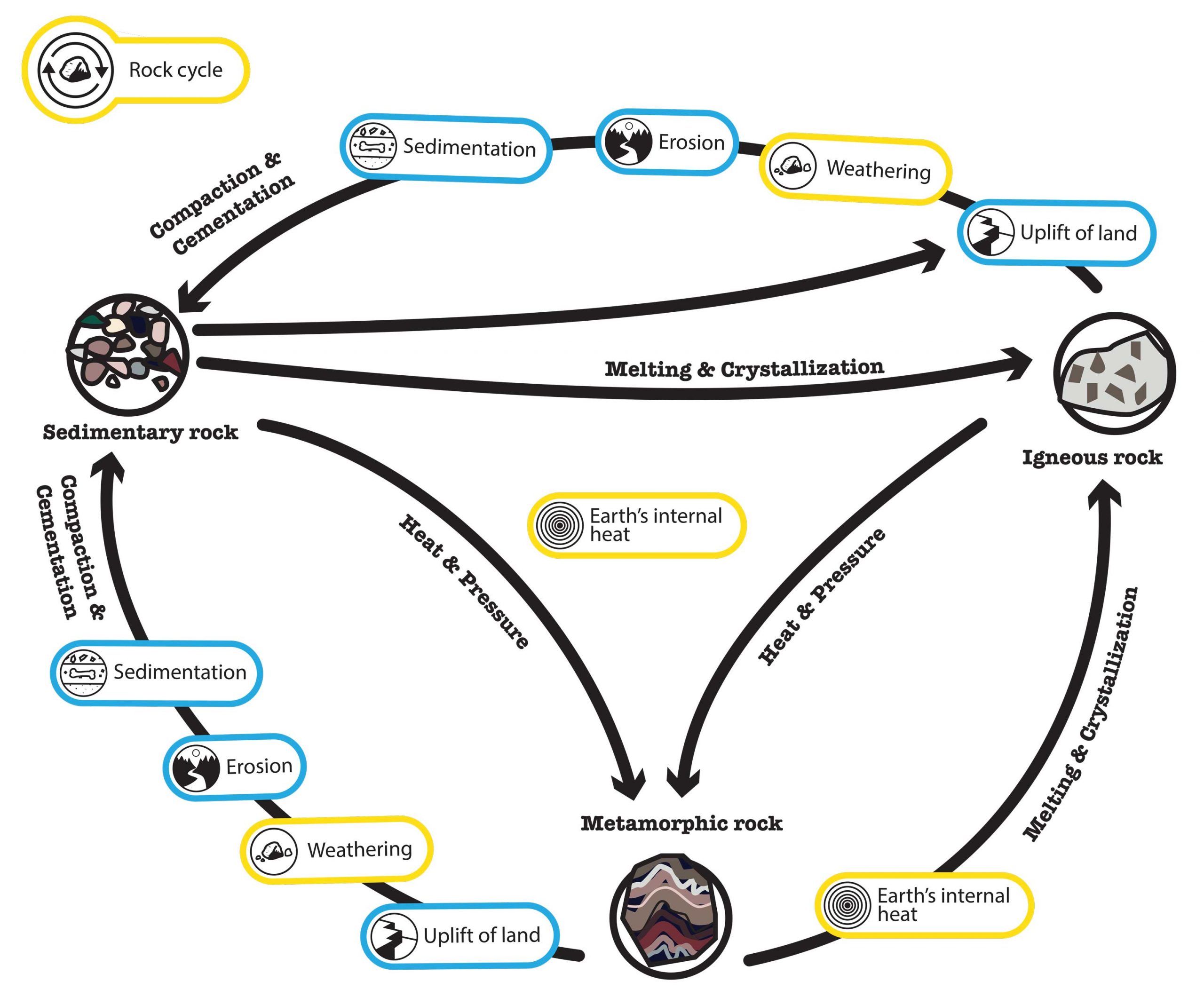
A simplified diagram of the rock cycle highlighting some of the UGC concepts related to this process

Molten lava cooling to form igneous rocks forming in Hawai’i National Park (left) metamorphic rocks in Death Valley National Park (right). Source: NPS Igneous Rocks and NPS Metamorphic Rocks
The rock cycle is affected by various human activities and environmental phenomena, including:
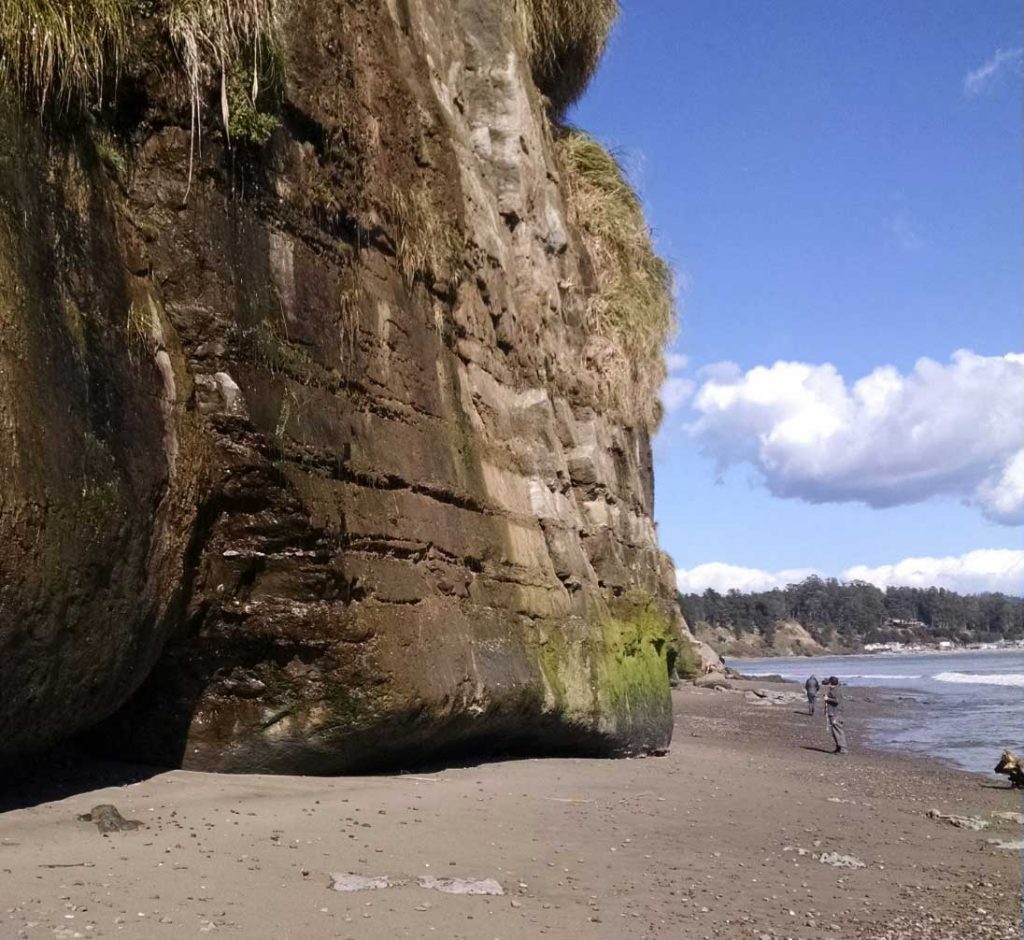
Sedimentary rocks along the California coast. Source: Explore Sediments Story Map
- The Earth’s internal heat and pressure, which can cause rock to melt completely or transform it into a metamorphic rock.
- The uplift of land caused by tectonic processes, which exposes rock that was underground to weathering and erosion.
- The rate of weathering, which is affected by climatic conditions such as precipitation and temperature. The rate at which the chemical reactions of weathering break down minerals often increases in the presence of water and under warmer temperatures. Plant growth, especially roots can physically break up rocks and also change the environmental chemistry (for example, increase acidity), increasing the rate of chemical weathering. In turn, the kind of rock that is weathered determines soil quality, nutrient levels (especially nitrogen and phosphorus levels), and local biodiversity.
- Rates of erosion caused by water, wind, ice, or gravity, which are driven by the water cycle, atmospheric and ocean circulation patterns, and regional topography (the structure of the landscape).
- The size and depth of the bodies of water, such as lakes, rivers, or the ocean, where sediment is deposited. Slower rates of water flow lead to the deposition of finer grained sediments and to slower rates of deposition.
- The extraction of rocks and fossil fuels, which in turn can destabilize soils, increase erosion, and decrease water quality by increasing sediment and pollutants in rivers and streams.
- Urbanization, which involves paving land with concrete, which can increase water runoff, increasing erosion and decreasing soil quality in the surrounding areas.
- Hydraulic fracking to remove oil and gas, which uses water, sand, and chemicals to create new or expand existing cracks in rocks that allow oil and gas to flow into drill holes for extraction.
- Human land and water use, including deforestation and agricultural activities. Removing trees and other plants, plowing fields, and overgrazing by livestock destabilizes soils and can increase rates of erosion by 10 to 100 times.
- Damming rivers and extracting water from freshwater ecosystems for human use changes where and how much sedimentation occurs, which affects soil quality and causes changes in habitats.
- Plants and other organisms, such as those that build coral reefs, can trap sediment that otherwise might be deposited elsewhere.
- Extreme weather events, which can cause accelerated rates of erosion due to flooding or wave action.
Earth system model of the rock cycle
The Earth system model below includes some of the processes and phenomena related to the rock cycle. These processes operate at various rates and on different spatial and temporal scales. For example, urbanization and industrialization of many agricultural activities has occurred over the last 300 years, and especially over the last 70 years, while tectonic processes and mountain building occur over millions of years. Can you think of additional cause and effect relationships between the parts of the rock cycle and other processes in the Earth system?
Explore the Earth System
Click the icons and bolded terms (e.g. plate tectonics, Earth’s internal heat, and erosion) on this page to learn more about these process and phenomena. Alternatively, explore the Understanding Global Change Infographic and find new topics that are of interest and/or locally relevant to you.
